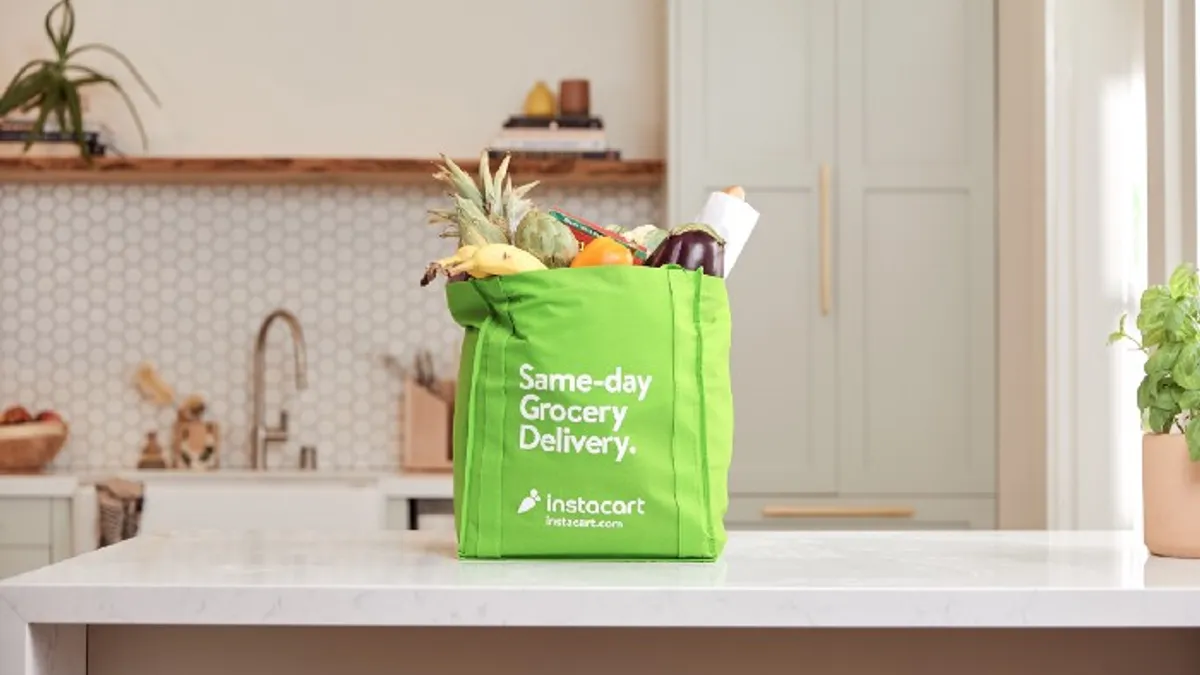Dive Brief:
- Instacart is preparing an initial public offering valued at $30 billion that could come early next year, Reuters reported, citing unnamed sources.
- Reuters reported the e-commerce firm sped up its plans after voters passed California’s Proposition 22, a measure that exempts third-party delivery platforms from classifying contract workers as employees.
- Instacart has been one of the biggest beneficiaries of the surge in online grocery shopping due to the pandemic this year, with volumes rising as much as 500% this spring.
Dive Insight:
Instacart has been clear in the past that it intends to go public, and this year’s e-commerce wave appears to have sped up the timetable for that milestone.
The firm received a $17.7 billion valuation last month after raising $200 million in private funding. Beginning in March, Instacart was able to ramp up labor quickly thanks to its independent contractor model and netted millions of new customers as a result. Volumes surged as shoppers turned to what is the only delivery option for many chains.
In addition to delivery, Instacart has added pickup services to 1,500 stores since March, and currently powers pickup for more than 60 grocers, including Aldi, Sprouts Farmers Market and The Fresh Market.
Instacart has added new grocers to its marketplace this year. It has also branched out further beyond grocery, linking up with retailers like Sephora and 7-Eleven as it becomes more of a cross retail e-commerce service.
Diversifying should help Instacart as it faces down challenges in grocery, including increasing competition from the likes of Uber and DoorDash. The latter filed for an IPO last week and was valued at $16 billion this summer. It currently offers grocery delivery to more than 75 million consumers through chains like Hy-Vee, Meijer and Smart & Final
Grocers are also pushing back on Instacart as they try to funnel more sales through their own platforms and use more of their own systems and workers to fill orders, sources say. Although hundreds of grocers have signed on with the technology since Amazon bought Whole Foods in 2017, many are now eager to claw back profit margins and customer data, and to control more of the user experience, sources say.













